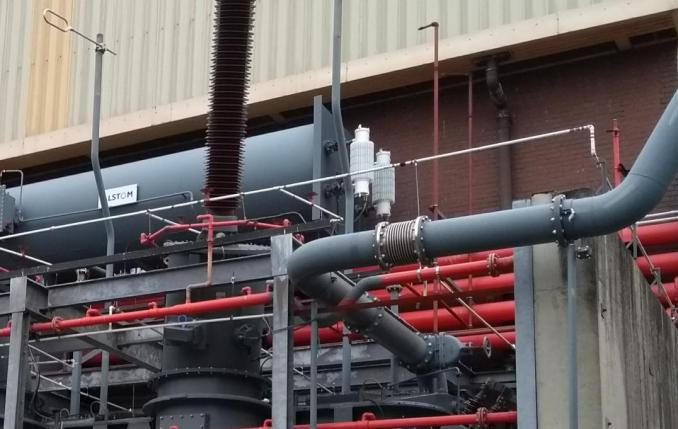Merford is less accessible during the holiday season. If you have a query during these days, please let us know at info@merford.com.
Sellindge (UK)
NoiseTrap® Panels reduce low frequency noise from power transformers
A third party acoustic consultancy was instructed by the client to conduct a noise impact assessment and mitigation review for an electricity converter station, which included eight super grid transformers.
The seven of the existing transformers were already located within noise enclosures with the exception of one transformer, which was newly replaced. The substation compound also contains filter banks, cooling equipment, shunt reactors and other ancillary plant.
The acoustic consultancy attended site to conduct sound level measurements of plant items and at the site boundary; following a number of noise complaint by nearby residents, and found that the low frequency noise generated by the substation was the source.
The potential impact of the operational activities of the proposed substation at sensitive residential receptors was assessed in accordance with BS4142 and found significant adverse impact.
The results of the noise surveys were then used to prepare a noise model of the site, as built. The model was then been manipulated to model a variety of proposed noise control scenarios, with NoiseTrap® Acoustic Panels, ultimately being independently selected as the best available technology.
Sonobex, working with Merford Noise Control, then designed and installed a NoiseTrap® LF 250 acoustic screen to successfully shield the remaining noisy transformer
Reassessment to BS4142 shows that the substation now has no adverse impact on the local residents, also meeting WHO night time noise regulations of 30 dB.
NoiseTrap® Panels are unique metamaterial-based acoustic panels that were specifically developed with a focus on power transformer noise abatement, but are also be applicable to other low frequency noise control applications.
They consist of coupled resonator elements designed to ‘trap’ the sound, resulting in both high levels of absorption and transmission loss. Find out more here.
Due to the complex design of the substation layout and location of ancillary items such as the fire deluge system, Sonobex utilised stare of the art 3D laser scanning surveying equipment.
The laser scanner system produced a 3D map of the full site layout, transformer and surrounding environment to an accuracy of ~1mm resolution.
The use of the laser scanning system ensured high accuracy and tolerances in the engineering design, which led to good, robust acoustic design and ensured that noise leakage is minimised. Also, any alterations or snagging items on site were significantly reduced, reducing downtime during the defined outage periods.
BS4142 assesses potential significance of effect by comparing the 'specific sound level' of an industrial source to the typically representative background sound level (LA90).
Certain acoustic features can increase the potential for a sound to attract attention, and therefore increase its relative significance than that expected from a simple comparison between the specific sound level and the background sound level.
In particular, BS4142 identifies noise that contains discrete impulses and / or audible tonal qualities and in these cases recommends that a correction be added to the specific sound level. The specific sound level along with any applicable correction is referred to as the 'rating level'. This is usually applied in substation environments, due to the low frequency, tonal noise they emit.
The greater the difference between the rating level and the background sound level; the greater the likelihood of complaints, which was the case in this project.
The assessment criteria given by BS4142 are as follows:
A difference of +10 dB or more is likely to be an indication of a significant adverse impact, depending on the context.
A difference of +5 dB could be an indication of an adverse impact, depending on the context.
The lower the rating level is relative to the measured background sound level, the less likely it is that there will be an adverse impact. Where the rating level does not exceed the background sound level, this is an indication of the specific sound source having a low impact, depending on the context.
Also to take into account the absolute level, risk that it will cause annoyance/interference with everyday activities, context of the sound, frequency and temporal variations to the sound.
